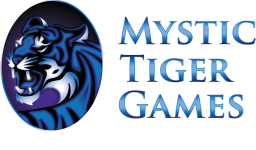Now that I'm working with artists, I'm starting to have to consider how my game will look once it's been printed. I've been using prototype cards and stickers that I've printed on my home computer for a while now. But I never really gave much thought about the differences in color between the computer screen and the printed version. I had noticed before that some colors didn't quite come out the same on paper, but I chalked it up to having a cheap printer.
Apparently this is more of a problem than I thought.
I know about color spaces in general. Computers represent colors using RGB (Red-Green-Blue) additive pixel values. Printers use CMYK (Cyan-Magenta-Yellow-Black) subtractive ink dots. But I guess I thought that the two were roughly equivalent, that a color on the computer screen would come out the same as on paper, if you just calibrated everything correctly. I guess not.
Then I saw some diagrams. Stuff about how some colors that can be viewed on the computer screen don't really have equivalents when printed. Some colors show up muted, dull, or grayish. I guess that meshes with what I was seeing; I was trying to use bright cyan colors for some of my icons and they came out looking kind of a dark greenish-blue.
From what I've been researching, a partial solution to this is to have the source image files be in CMYK format. If the art is originally made using those colors, then the translation to paper won't be as dramatic. Great, so I just ask my artists to give me files using that format.
Except, CMYK isn't a format. Okay, I can work around that. Some file formats handle CMYK data. PNGs don't. :( Hrm, okay. TIFFs do. Better. But TIFF doesn't handle transparent bits, and I need icons and such that aren't exactly square. PDFs? Same deal. PSDs. Okay, that works. Those handle that color space, and can do transparency.
So... what do I do with a PSD? I have editing tools that can convert those to other formats, but in the process, the image would get converted from CMYK to RGB, kind of defeating the purpose of having the artists give them to me in that format to begin with.
So, that just leaves... Photoshop. Meh. Expensive, and I'm not really that good with it. For putting the art pieces together, there's also InDesign. Again, meh. Same price problem, and I don't know that one at all.
Are there any other tools out there that can handle this type of file, from input through the pipeline to output, and that don't cost budget-shriveling sums of money? (Is this something the industry needs? Perhaps there's a potential for new software here.)
Oh well, at least Photoshop has a free trial. :P
Apparently this is more of a problem than I thought.
I know about color spaces in general. Computers represent colors using RGB (Red-Green-Blue) additive pixel values. Printers use CMYK (Cyan-Magenta-Yellow-Black) subtractive ink dots. But I guess I thought that the two were roughly equivalent, that a color on the computer screen would come out the same as on paper, if you just calibrated everything correctly. I guess not.
Then I saw some diagrams. Stuff about how some colors that can be viewed on the computer screen don't really have equivalents when printed. Some colors show up muted, dull, or grayish. I guess that meshes with what I was seeing; I was trying to use bright cyan colors for some of my icons and they came out looking kind of a dark greenish-blue.
From what I've been researching, a partial solution to this is to have the source image files be in CMYK format. If the art is originally made using those colors, then the translation to paper won't be as dramatic. Great, so I just ask my artists to give me files using that format.
Except, CMYK isn't a format. Okay, I can work around that. Some file formats handle CMYK data. PNGs don't. :( Hrm, okay. TIFFs do. Better. But TIFF doesn't handle transparent bits, and I need icons and such that aren't exactly square. PDFs? Same deal. PSDs. Okay, that works. Those handle that color space, and can do transparency.
So... what do I do with a PSD? I have editing tools that can convert those to other formats, but in the process, the image would get converted from CMYK to RGB, kind of defeating the purpose of having the artists give them to me in that format to begin with.
So, that just leaves... Photoshop. Meh. Expensive, and I'm not really that good with it. For putting the art pieces together, there's also InDesign. Again, meh. Same price problem, and I don't know that one at all.
Are there any other tools out there that can handle this type of file, from input through the pipeline to output, and that don't cost budget-shriveling sums of money? (Is this something the industry needs? Perhaps there's a potential for new software here.)
Oh well, at least Photoshop has a free trial. :P

 RSS Feed
RSS Feed